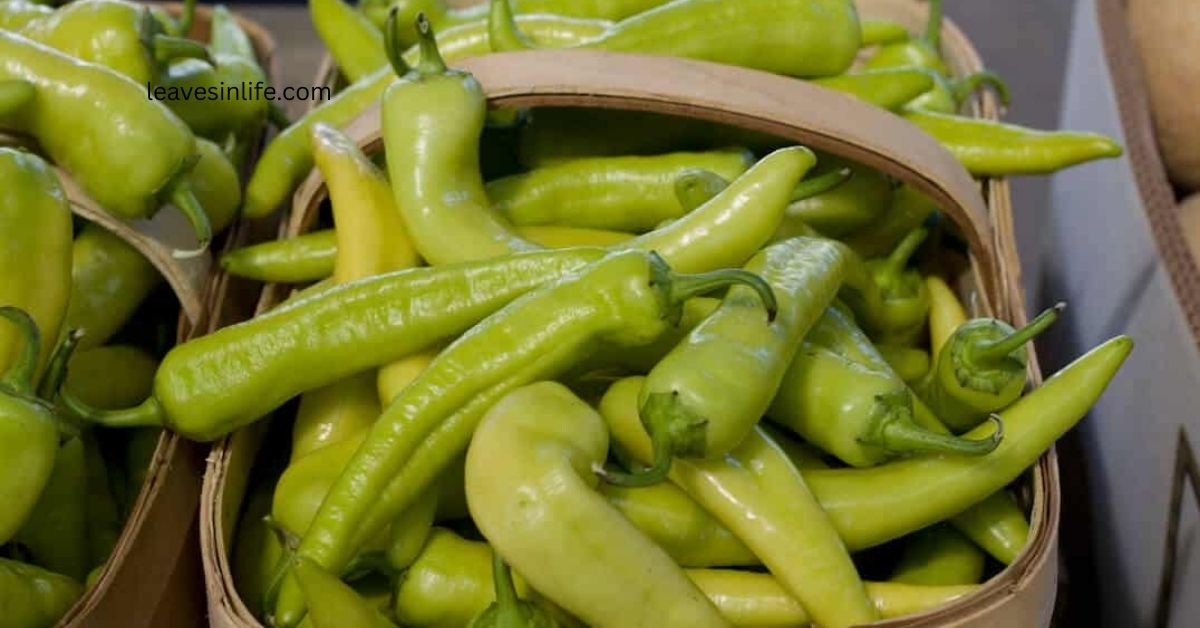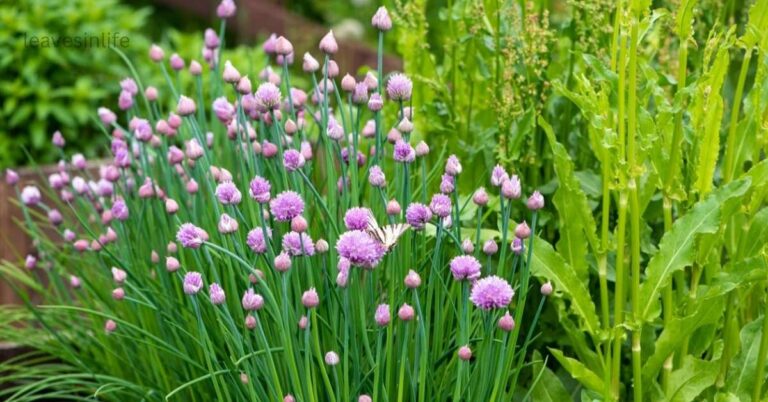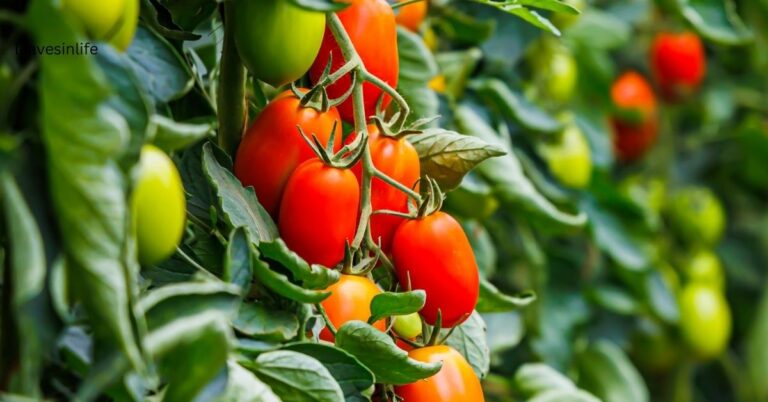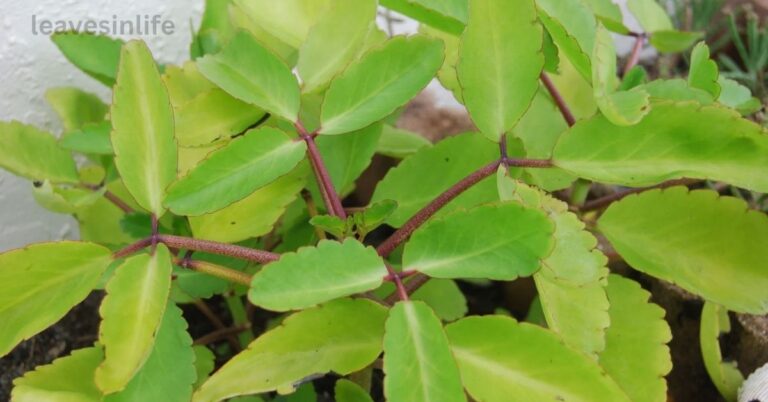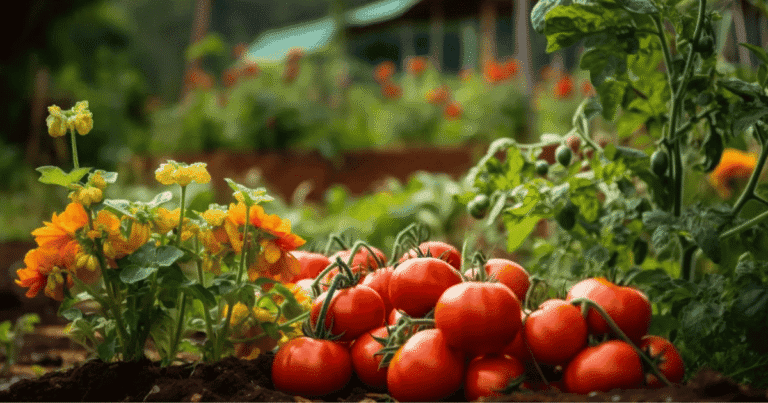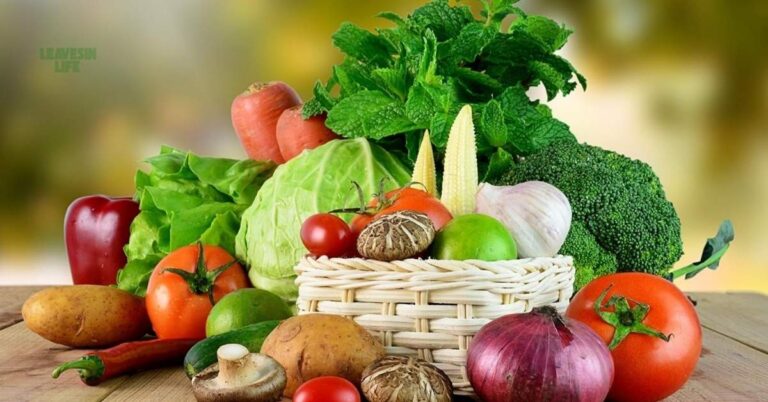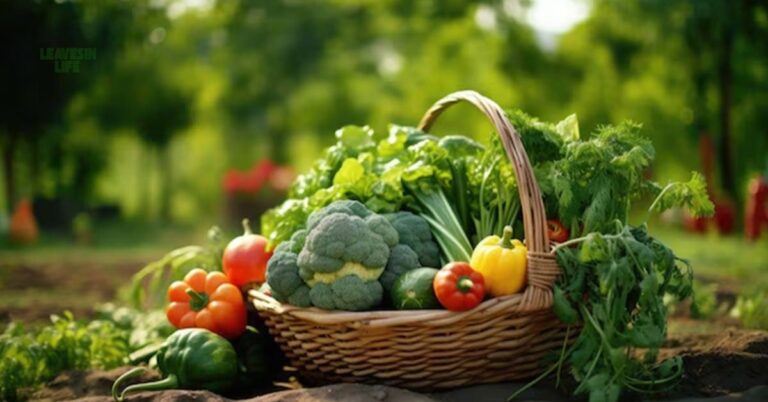If you think all chilies are created equal, wait until you meet the hot banana chilli plant — its sweet heat will surprise you! This article offers an in-depth overview of this beloved plant, focusing on its taste, heat level, and why it’s become a top choice for home growers.
As you read on, you’ll discover valuable tips for caring for this versatile plant and learn why it deserves a spot in your garden. Get ready to spice up your meals with this remarkable chili!
Understanding the Hot Banana Chilli Plant
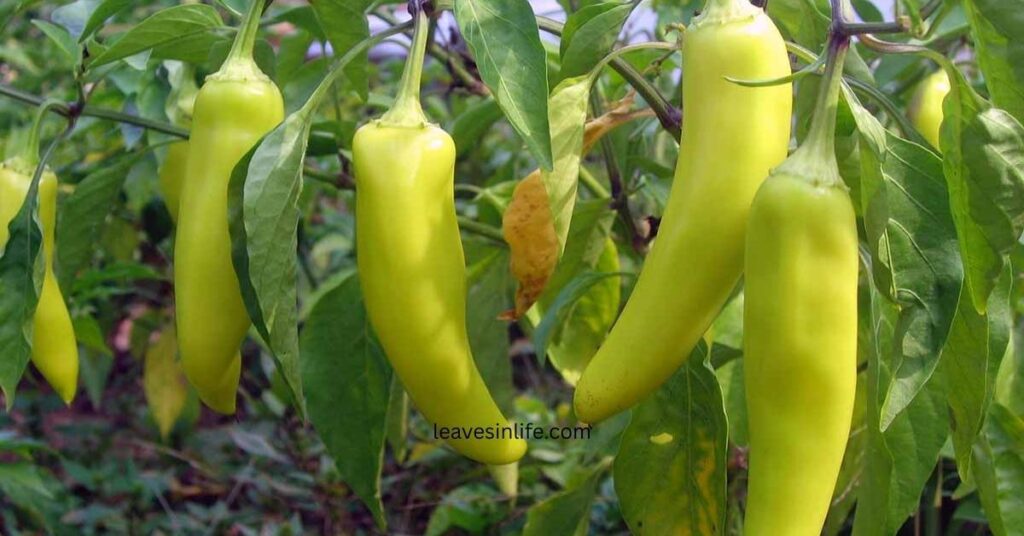
These bright yellow, elongated chilies are not only eye-catching but also bring a mild heat with a touch of sweet zest to your dishes. The plant doesn’t grow very tall — just about two to three feet — making it perfect for pots or small spaces.
- Thrives in warm weather and plenty of sunshine.
- Regular watering and light feeding produce more flavorful chilies.
- Ready to harvest in just 75 to 90 days!
These chilies are fantastic in salsas, stir-fries, or pickled for a tangy snack. Plant them once, and watch how they add both color to your garden and flavor to your kitchen!
Growing Hot Banana Chilli from Seed
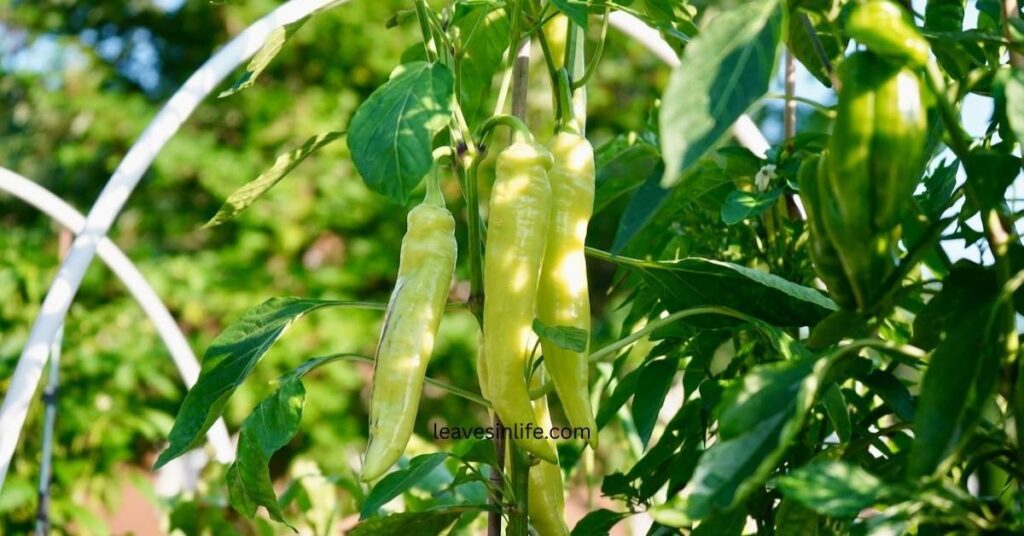
Growing Hot Banana Chilli from seed is a journey of patience and care. Every stage, from sprouting to harvesting, teaches the wonders of nature and the joy of nurturing life.
Best Season for Sowing
- Hot Banana Chilli seeds are best sown during the warm days of spring.
- When temperatures consistently stay between 21°C to 29°C (70°F to 85°F).
- This season ensures quick germination and helps the plant achieve healthy growth with better yields.
Soil Preparation & Requirements
- This plant thrives in fertile soil that drains well without holding excess water.
- A mix of garden soil with compost or organic fertilizer works best.
- Such soil not only provides essential nutrients but also supports beneficial microorganisms that keep the plant healthy.
Step-by-Step Seed Germination Process
- Soak the seeds in water for 24 hours to speed up sprouting.
- Sow them about half an inch deep in small pots or seed trays filled with the prepared soil.
- Keep the soil lightly moist, but avoid waterlogging.
- Cover the tray with plastic to maintain humidity.
- Seeds usually germinate within 7 to 14 days.
Indoor vs Outdoor Sowing
- Indoor sowing allows better control over temperature and protection from pests, keeping the seeds safer.
- Outdoor sowing exposes the plants to natural sunlight and pollinators, which can significantly boost fruit production.
Whether you grow them indoors or outdoors, always ensure the plants receive plenty of sunlight and warmth so they grow strong and healthy.
Transplanting Hot Banana Chilli Seedlings
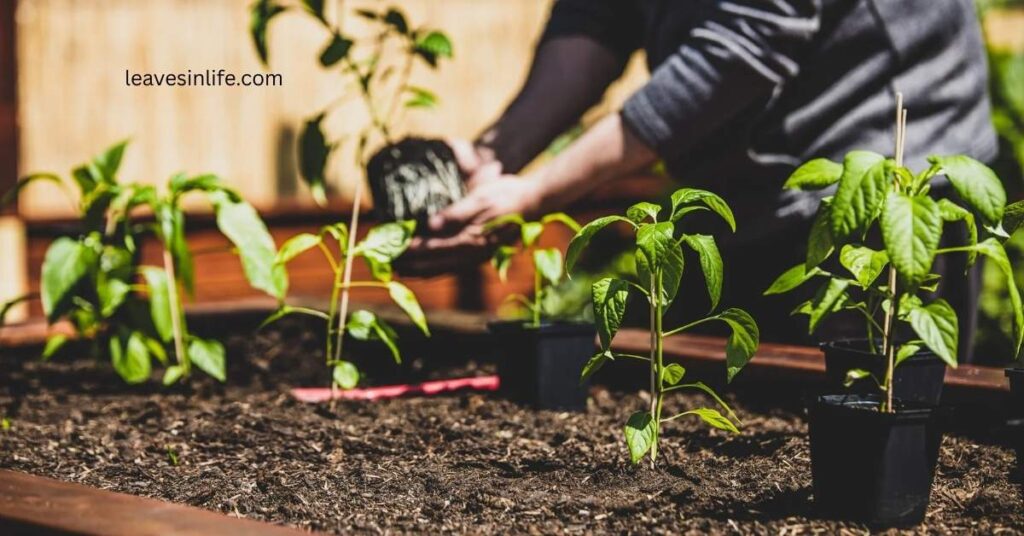
Transplanting hot banana chilli seedlings carefully ensures strong and healthy growth.
Give your hot banana chilli plant natural sunlight and nutrient-rich soil to help it flourish.
With proper care, your Hot Banana Chilli plant naturally grows into a productive and vibrant plant.
When and How to Transplant
- Your hot banana chilli seedlings are ready for transplanting once they reach 4–6 inches tall and have developed at least two sets of true leaves—usually about 4–6 weeks after germination.
- For best results, transplant them on a cloudy day or in the late afternoon to reduce stress from direct sunlight.
Pot vs Garden Bed Options
- Pots: Great for flexibility—easy to control soil quality and move plants around for maximum sunlight.
- Garden Beds: Provide more root space, promoting stronger growth if the soil is fertile and well-drained.
Spacing & Sunlight Requirements
- No matter where you plant them, leave 18–24 inches between seedlings to ensure good airflow and lower the risk of disease.
- Choose a sunny spot that gets 6–8 hours of direct sunlight daily.
- Plenty of sun not only boosts plant vigor but also intensifies the spicy flavor of your Hot Banana Chillis.
Caring for Your Hot Banana Chilli Plant
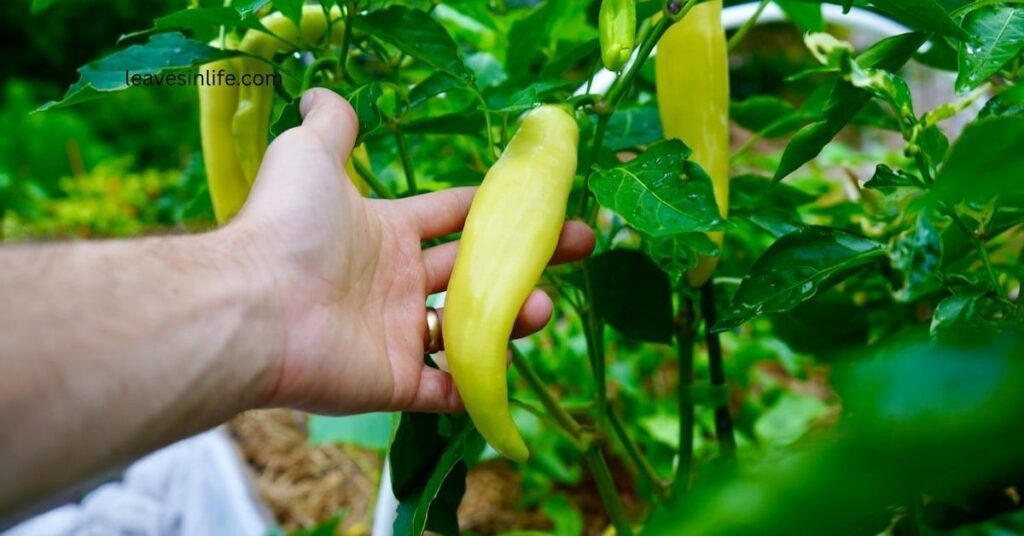
Hot banana chilli plants are those that require care. They should be watered on time and grown where they receive proper sunlight. These plants flourish when tended to with attention.
Watering Schedule for Healthy Growth
- A consistent watering routine is key to thriving Hot Banana Chilli plants.
- Keep the soil slightly moist but never soggy—too little water can stunt growth, while too much may cause root rot.
- During hotter weather, increase watering frequency; in cooler conditions, reduce it.
- A drip irrigation system works well for providing a steady, even supply of moisture.
Fertilizers & Nutrients for Strong Plants
- Boost your plant’s vigor and yields by enriching the soil with organic compost or well-rotted manure.
- A balanced fertilizer containing nitrogen, phosphorus, and potassium (NPK) will support leafy growth, strong roots, and better fruit development.
- Regular feeding ensures robust and productive plants throughout the season.
Mulching & Weed Control
- Applying a layer of mulch around the base of your plants helps retain soil moisture and regulates temperature.
- Mulch also suppresses weeds, preventing them from stealing valuable nutrients from your chilli plants.
Pest and Disease Management
- Keep an eye out for common pests such as aphids and spider mites.
- Early intervention is crucial—spray affected plants with neem oil or insecticidal soap to prevent infestations from spreading.
- Good airflow and proper spacing also reduce the risk of fungal diseases, ensuring your Hot Banana Chilli plants stay healthy and productive.
Flowering and Fruit Development in Hot Banana Chilli
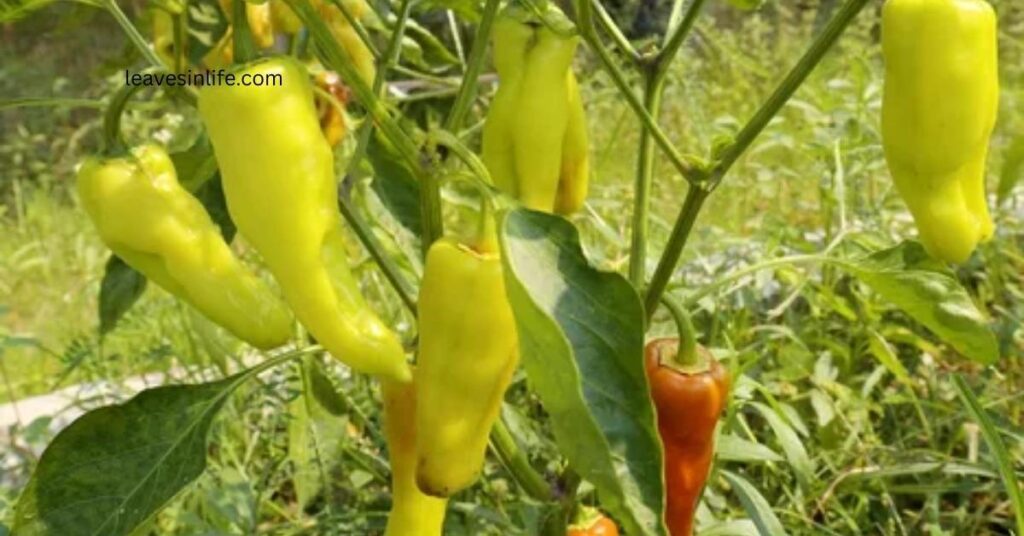
During flowering and fruit development, the hot banana chilli plant naturally shows its potential. Proper sunlight, water, and care help the flowers turn into healthy, vibrant chili fruits.
Flower to Chilli Growth Cycle
- The journey begins with delicate, vibrant blossoms that signal the start of fruiting.
- These flowers attract pollinators like bees, which help transfer pollen and trigger fruit formation.
- Once the blooms fade, small green chillies emerge, marking the exciting transformation from flower to fruit.
- For growers, this is one of the most rewarding stages to witness.
Staking & Plant Support
- As the plants grow taller and begin to carry more fruit, their branches can become heavy.
- Sturdy stakes or plant supports help keep the stems upright, preventing them from bending or snapping.
- This practice also improves air circulation around the foliage, lowering the risk of fungal diseases in dense growth.
Identifying Signs of Healthy Fruit Formation
- Healthy Hot Banana Chilli plant should be firm, plump, and bright green, often with a glossy sheen that indicates proper hydration and nutrient absorption.
- Watch closely for any spots, discoloration, or shriveling, as these may signal pests, nutrient deficiencies, or disease that need quick attention.
Harvesting Hot Banana Chilli
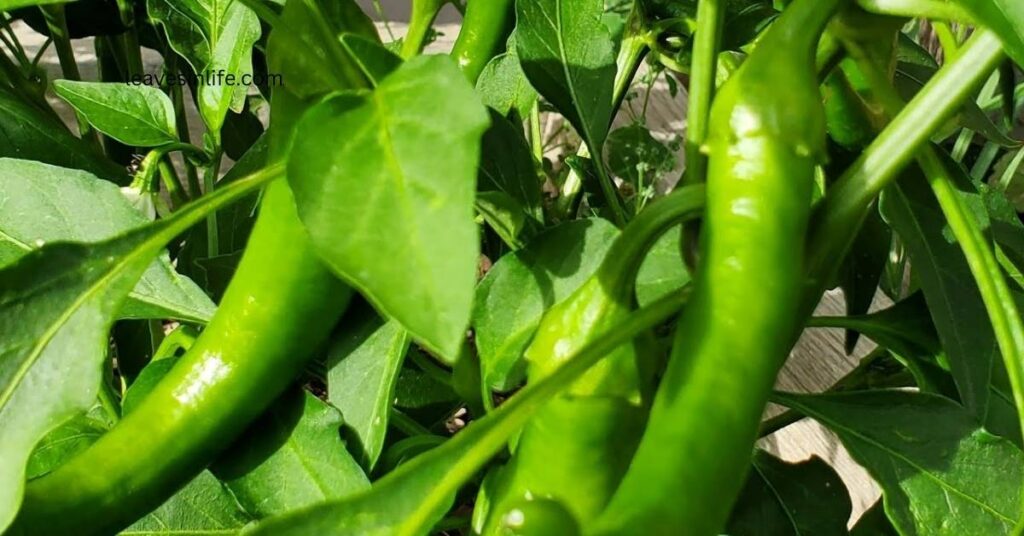
Harvesting the hot banana chilli plant naturally rewards you with vibrant, ripe chili fruits.
When to Harvest
Timing is key when harvesting hot banana chilli plant.
- Green chillies: Crisp and mildly spicy — pick if you prefer a fresh flavor.
- Ripe yellow chillies: Sweeter, hotter, and more complex — wait if you want full flavor.
How to Harvest
- Handle the plant gently to avoid damage.
- Use scissors or pruning shears to snip the fruit at the stem.
- Avoid pulling or tugging on the chillies.
- Proper harvesting encourages the plant to produce more fruit throughout the season.
Expected Yield
- Each plant can produce 30–50 chillies per season.
- Yield depends on care, soil quality, sunlight, and climate.
- Following correct harvesting techniques ensures maximum bounty and healthier plants.
Post-Harvest Handling for Gardeners
Proper post-harvest handling helps gardeners preserve the quality and freshness of their hot banana chilli plant harvest.
Proper Storage Techniques (Fresh & Dried)
After harvesting your hot banana chillies, proper storage is key to keeping them fresh and flavorful.
- Fresh chillies: Store in a cool, dry place, ideally in a paper bag or wrapped in a breathable cloth to prevent moisture and rot.
- Dried chillies: Air-dry or use a dehydrator to intensify flavor.
- Once fully dried, keep them in airtight containers away from light and heat to maintain potency.
Preservation Options for Gardeners
Expand beyond basic storage with creative ways to enjoy your harvest:
- Pickling: Adds flavor and extends shelf life.
- Spicy sauces: Showcase the unique heat of your Hot Banana Chillies.
- Fermentation: Preserves the chillies, enhances their flavor, and introduces beneficial probiotics.
By using these techniques, you can enjoy your garden’s bounty all year and share it with friends and family, creating memorable meals with fresh, zesty chillies.
Global Cultivation of Hot Banana Chilli Plant (70+ Countries)
The hot banana chilli plant is now cultivated in more than 70 countries. Its adaptability allows it to thrive wherever green chillies or bell peppers are grown.
| Region | Countries (Examples) | Cultivation Notes |
| South Asia | Pakistan, India, Bangladesh, Sri Lanka | Excellent yield in open fields |
| Southeast Asia | Thailand, Vietnam, Indonesia, Philippines | Year-round cultivation in humid climates |
| Latin America | Brazil, Mexico, Peru, Colombia | Native crop, high domestic use + export |
| Africa | Nigeria, Kenya, Egypt, Ethiopia, Morocco | Strong export demand, fresh and dried |
| Mediterranean | Spain, Italy, Turkey, Greece | Ideal for pickling varieties |
| North America | USA, Canada (greenhouse) | Major demand from fast food industry |
| Europe (Temperate) | Netherlands, Germany, Poland, Hungary | Greenhouse-based production |
| East Asia | China, Japan, South Korea | High-yield hybrids for local and export markets |
| Oceania | Australia, New Zealand | Seasonal + greenhouse cultivation |
Conclusion
The hot banana chilli plant is not just a vegetable but a beautiful journey, filled with patience and contentment. From sowing the seed to harvesting the red chili, every stage teaches a lesson of patience, care, and the wonders of nature.Those who are new should use quality seeds so they can achieve a healthy and successful crop.
The plants need plenty of sunlight, water should be given carefully, and advice and experiences should be sought from experienced gardeners. In the end, the real reward is not just the chili harvested, but the joy, knowledge, and pride gained while nurturing the plant from seed to ripening.

